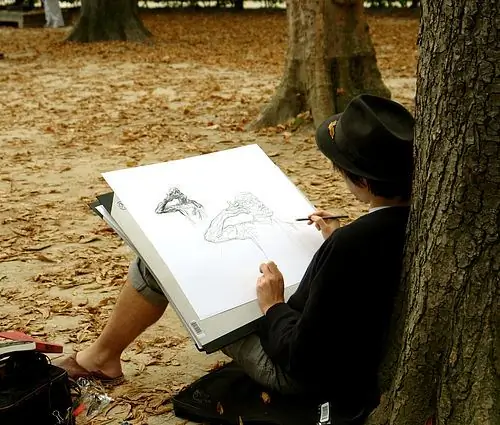Artistic mastery requires a certain investment of not only time, but also mental and physical strength. And if you decide to learn how to draw, you must honestly answer yourself, what do you mean by the word "draw". It's one thing when you need to familiarize yourself with the basics of visual literacy in order to draw on a computer in various graphic editors. In this case, the level of your skill depends more on mastering and knowledge of graphic programs. You can start, for example, with Photoshop.
And it is completely different if you are an adherent of the classical approach to drawing and strive not only to draw correctly, but to develop artistic thinking in yourself, as well as the ability to see harmony (shapes, lines, chiaroscuro, color rendering, etc.), to catch and transfer the main the essence and nature of the object.

Instructions
Step 1
From time immemorial, the optimal transfer of any knowledge took place in the context of oral tradition, from teacher to student. And only relatively recently has written writing appeared. Live contact with the master, his illustrative example, is an important factor in mastering the secrets of artistic skill. But in our age of the rapid development of communication tools, in particular the Internet, video drawing lessons are a completely acceptable alternative. This option is especially good if you do not have the opportunity to attend an art school or club. Whichever method you choose to learn, remember, perfection is achieved by simple repetition.
Step 2
Draw often and a lot. Adhere to the principle of consistency in the assimilation of the material: from simple to complex, from particular to general. For example, for drawing with a pencil, it is better to start by studying simple geometric shapes, learn how to apply shadows to the same shapes, changing the position of the light source (it is better to use hatching), then go to the layout of the shapes.
Step 3
To learn how to draw figures of people and animals, it is important to study the structure of the body, plasticity, facial expressions, dynamics.
Step 4
Remember to take a constructive approach to your image. Watch how the master does it, track the sequence of his actions. Learn to sketch (capture the point in a few basic strokes). Practice the skills yourself.
Step 5
To learn how to paint, it is convenient to start with watercolors, but try other tools (ink, gouache, sauce).
Step 6
When drawing a still life or portrait, try to sketch from the very beginning, capturing and conveying the main color and tone of the drawing.
Step 7
Then move on to the general setting. To create landscapes, you need to be more in nature, contemplate, study in order to expand the boundaries of color perception.
Step 8
Observe the techniques of professionals, track the sequence of creating a drawing, ask questions, analyze
Step 9
For those who want to learn how to draw for the pleasure and enjoyment of the very process of creativity, art therapy courses will appeal to their taste. The main goal of which is: disclosing your creative potential, developing the ability to think outside the box and self-expression, relieve stress and tension, gain inspiration and inner harmony.
Draw and be happy!






